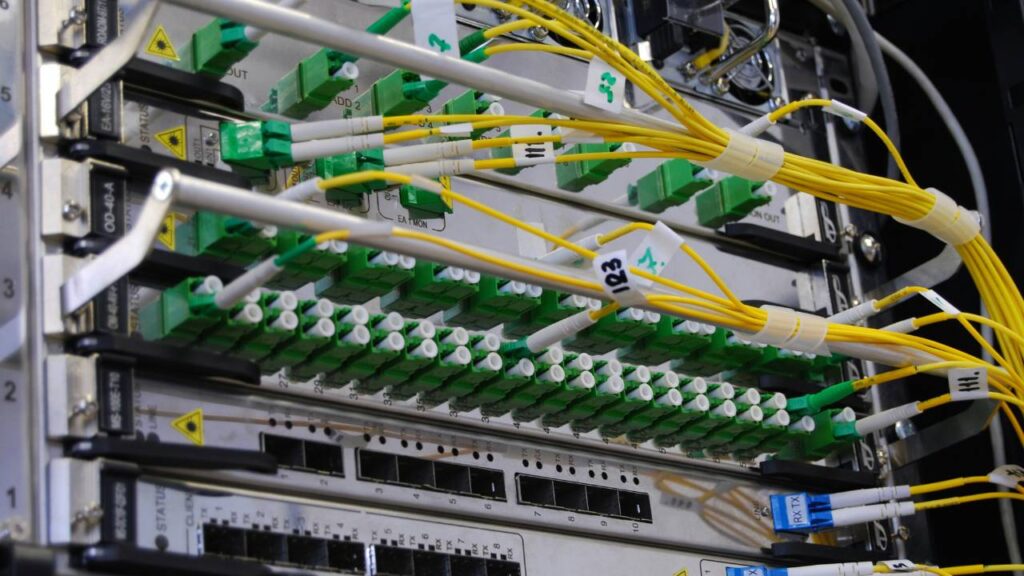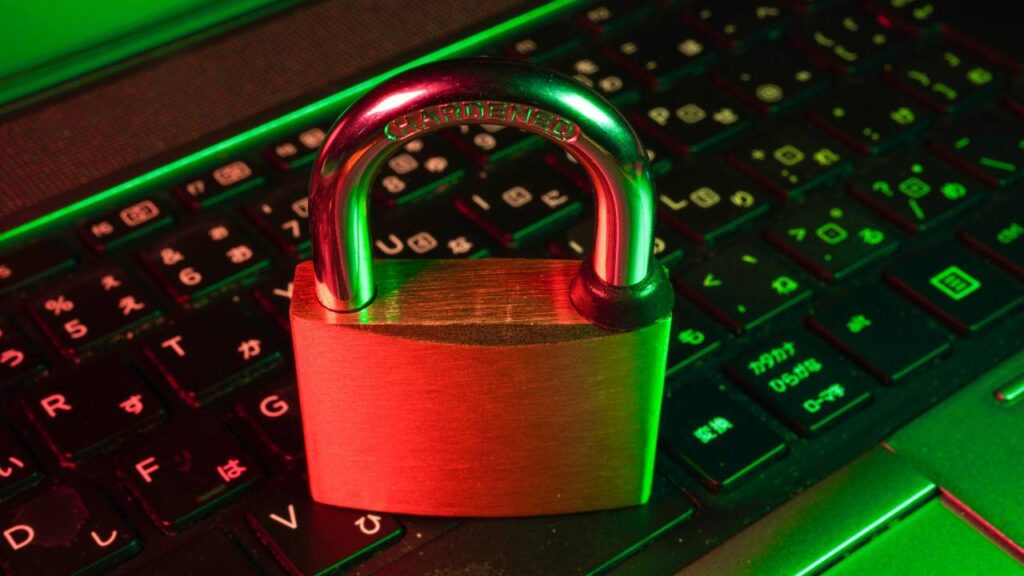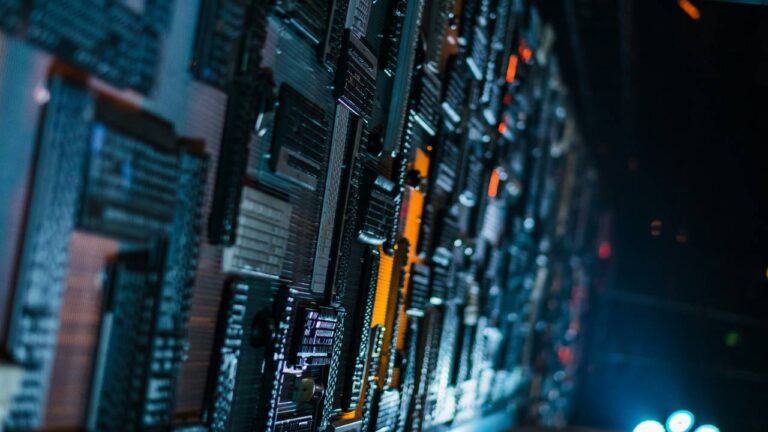The backbone of virtually every business operation in today’s digital economy is robust IT infrastructure. From customer relationship management to inventory tracking, financial transactions to employee collaboration, technology systems have become indispensable for companies of all sizes across Ireland. However, this growing dependence creates significant vulnerability – when technology fails, business grinds to a halt.
Building a safe IT infrastructure requires addressing two equally important dimensions: physical safety and digital security. The physical aspects include electrical safety, hardware protection, and environmental controls that prevent equipment damage and workplace hazards. Digital security encompasses the protection of data, applications, and networks from unauthorised access or malicious attacks.
Infrastructure Starts with Safe Hardware Setup

The foundation of any IT infrastructure begins with the physical hardware that supports your operations. This includes servers, storage systems, networking equipment, and end-user devices. While performance specifications naturally factor into purchasing decisions, safety considerations should carry equal weight.
Selecting appropriate installation locations represents a critical first step. Server rooms should be designed with sufficient space for equipment access, proper ventilation, and appropriate fire suppression systems. Power distribution systems must accommodate both current needs and potential expansion while maintaining compliance with electrical safety standards.
For many businesses, portable electronic devices constitute a significant portion of their IT assets. A person who can carry out PAT testing is required to verify the safety of electrical devices such as servers, printers, and desktop stations in your business IT environment. PAT (Portable Appliance Testing) involves inspecting and electronically testing equipment to ensure it meets safety standards and doesn’t pose electrical hazards to users or facilities.
In Ireland, the Safety, Health and Welfare at Work (General Application) Regulations 2007 establish specific requirements for maintaining workplace electrical safety. Regular inspection and testing form a key component of compliance with these regulations. While the legislation doesn’t explicitly mandate specific testing intervals for all equipment types, risk assessment principles suggest frequencies based on equipment type, usage patterns, and operating environment.
Electrical safety compliance for Irish businesses isn’t just about ticking boxes – it ensures workplace safety, protects equipment, and can even affect insurance coverage. Many insurance policies now specifically require evidence of regular electrical testing, making compliance not just a legal consideration but a financial one as well. Moreover, proper electrical safety practices protect valuable IT investments from power-related damage that can lead to data loss and operational disruptions.
Beyond testing, hardware setup safety should include:
- Appropriate equipment mounting and securing to prevent tipping or falling hazards
- Clear labelling of all components, particularly those carrying electrical current
- Sufficient clearance around heat-generating equipment to prevent overheating
- Installation of emergency power-off systems in server rooms and data centers
- Protection of sensitive equipment from water sources or sprinkler systems
- Secured access to prevent unauthorised physical access to critical infrastructure
These physical safety measures provide the foundation upon which digital security can be effectively built. Without them, even the most sophisticated cybersecurity measures may prove ineffective when physical systems fail or create workplace hazards.
Managing Power, Cooling, and Cabling
Power management represents one of the most critical and often underappreciated aspects of safe IT infrastructure. Power irregularities – from minor fluctuations to complete outages – can damage sensitive equipment, corrupt data, and disrupt business operations.
Many businesses discover that poor infrastructure planning in power management leads to expensive emergency fixes and unexpected downtime, making it essential to address power requirements during the initial design phase rather than as an afterthought.
Uninterruptible Power Supply (UPS) systems provide the first line of defence against power problems. These battery backup devices maintain power during brief outages and, more importantly, condition incoming power to eliminate surges, sags, and other electrical anomalies that can damage equipment over time. For critical infrastructure, redundant UPS systems with automatic failover capabilities provide additional protection.
For larger installations, power distribution units (PDUs) with remote monitoring capabilities allow IT staff to track power consumption, identify potential overloads before they cause problems, and remotely manage device power. These intelligent power systems represent a significant advancement over basic power strips, providing both enhanced safety and operational flexibility.
Cooling represents the necessary counterpart to power management. As IT equipment consumes electricity, it generates heat that must be effectively removed to prevent performance degradation and potential hardware failures. Proper cooling design should consider:
- Room layout and airflow patterns to prevent hot spots
- Separation of hot and cold air through containment strategies
- Redundant cooling systems for critical infrastructure
- Temperature and humidity monitoring with automated alerting
- Regular maintenance of all HVAC components
Effective cable management completes the physical infrastructure trifecta. Beyond the obvious aesthetic benefits, proper cabling practices deliver significant safety and performance advantages:
- Reduced trip hazards from exposed cabling
- Improved airflow and cooling efficiency
- Easier troubleshooting and maintenance
- Prevention of cable damage from pinching or excessive bending
- Clear identification of connections through consistent labeling
- Simplified compliance with building and fire safety codes
For growing organisations, designing physical infrastructure with future expansion in mind helps prevent the safety compromises that often accompany rushed additions to existing systems. Leaving adequate space for growth, installing slightly oversized containment systems, and documenting cable pathways all contribute to maintaining safety standards during expansion.
Software, Networks, and Data Protection Measures

While physical safety establishes the foundation, digital security measures protect the data and applications that drive business value. A comprehensive approach to digital protection should address multiple layers, from individual devices to network infrastructure to cloud environments.
At the device level, endpoint protection goes beyond traditional antivirus software to include:
- Advanced threat detection using behavioural analysis and machine learning
- Application whitelisting to prevent unauthorised software execution
- Full-disk encryption to protect data if devices are lost or stolen
- Automated patch management to address known vulnerabilities
- Hardware-level security features such as secure boot and trusted platform modules
Network security builds upon this foundation with multiple defensive layers:
- Next-generation firewalls that inspect traffic beyond simple port and protocol rules
- Intrusion detection and prevention systems that identify suspicious activities
- Network segmentation that limits lateral movement if perimeter defences are breached
- Secure remote access solutions for distributed workforces
- DNS filtering to block connections to known malicious domains
For data protection, organisations must implement both preventative and detective controls:
- Role-based access controls that limit data exposure based on job requirements
- Data loss prevention systems that monitor for unauthorised information transfers
- Encryption for sensitive data both in transit and at rest
- Comprehensive backup solutions with offline copies to prevent ransomware impacts
- Audit logging and monitoring to detect unusual access patterns
Safeguarding your company through cybersecurity means implementing proactive threat detection, regular audits, and employee awareness training – not just reactive protection. This proactive stance represents a significant shift from traditional security approaches that focused primarily on perimeter defences. Modern security frameworks recognise that preventative measures alone cannot guarantee protection, making detection and response capabilities equally important.
For Irish businesses, data protection carries particular significance due to GDPR requirements. Organisations must maintain appropriate technical and organisational measures to protect personal data, with potential penalties reaching €20 million or 4% of global annual revenue for serious violations. Implementing the security measures described above helps demonstrate compliance with GDPR’s security requirements while protecting business operations from increasingly sophisticated cyber threats.
Remote Work and Mobile Device Safety
The dramatic expansion of remote work has fundamentally changed IT infrastructure requirements. Where network perimeters once ended at the office wall, they now extend to hundreds or thousands of home offices, coffee shops, and co-working spaces. This distributed environment introduces new security challenges that require thoughtful policy development and technical controls.
Secure remote access begins with strong authentication mechanisms:
- Multi-factor authentication for all remote connections
- Single sign-on solutions that simplify secure access while maintaining control
- Conditional access policies that consider user location, device status, and behaviour patterns
- Password managers that facilitate the use of strong, unique credentials
For organisational devices used remotely, enhanced endpoint protection becomes even more critical:
- Mobile device management systems that enforce security policies
- Remote wiping capabilities for lost or stolen devices
- VPN or zero-trust network access for secure connectivity
- Automated backup solutions that don’t rely on user action
When employees use personal devices for work purposes (BYOD), additional considerations apply:
- Clear separation between work and personal data
- Limited access to sensitive systems from unmanaged devices
- Technical controls to prevent data leakage between work and personal applications
- Regular security awareness training focused on home and mobile device safety
Physical safety considerations extend to remote environments as well. While organisations cannot directly control employee home offices, they can provide guidance and support for safe setup:
- Proper ergonomics to prevent repetitive strain injuries
- Basic electrical safety guidance for home office setups
- Recommendations for surge protection and backup power
- Advice on secure disposal of sensitive printed materials
Developing comprehensive remote work policies that address both physical and digital safety helps organisations maintain consistent protection standards across distributed environments while giving employees the flexibility they increasingly expect.
Audits, Documentation, and Compliance Checks

Even the most thoughtfully designed infrastructure requires ongoing verification to maintain safety and security standards. Regular audits, comprehensive documentation, and systematic compliance checks provide the oversight needed to identify and address emerging issues before they cause significant problems.
Documentation should cover all aspects of IT infrastructure, including:
- Network diagrams showing all devices, connections, and security controls
- Asset inventories with detailed information about all hardware and software
- Configuration standards for different device types and system components
- Security policies and procedures covering both physical and digital protection
- Incident response plans for various emergency scenarios
- Test results from all safety and security assessments
Regular audits should systematically evaluate infrastructure components against established standards:
- Physical safety inspections of server rooms, wiring closets, and workstations
- PAT testing in accordance with risk-based schedules
- Vulnerability scanning to identify software security weaknesses
- Access control reviews to verify appropriate permission settings
- Backup testing to confirm data recoverability
- Penetration testing to identify potential security weaknesses
For many organisations, external validation provides additional assurance beyond internal checks. Third-party assessments offer several advantages:
- Objective evaluation by specialists with broad experience
- Fresh perspectives that may identify overlooked issues
- Formal documentation that can satisfy regulatory requirements
- Benchmark comparisons against industry standards and best practices
Irish businesses face compliance requirements from multiple sources, including the HSA for workplace safety, the Data Protection Commission for GDPR compliance, and various industry-specific regulators. A systematic approach to documentation and auditing simplifies the process of demonstrating compliance while identifying improvement opportunities.
Conclusion
Setting up a safe IT infrastructure in Ireland demands a balanced focus on both physical safety and digital security. From proper electrical testing and power management to network protection and GDPR compliance, addressing each layer helps safeguard your operations against costly disruptions and regulatory risks.
Proactive planning, regular audits, and strategic use of expert support can transform your infrastructure from a potential vulnerability into a resilient asset. With the right safety measures in place, your IT environment can support secure, stable growth in an increasingly complex business landscape.
